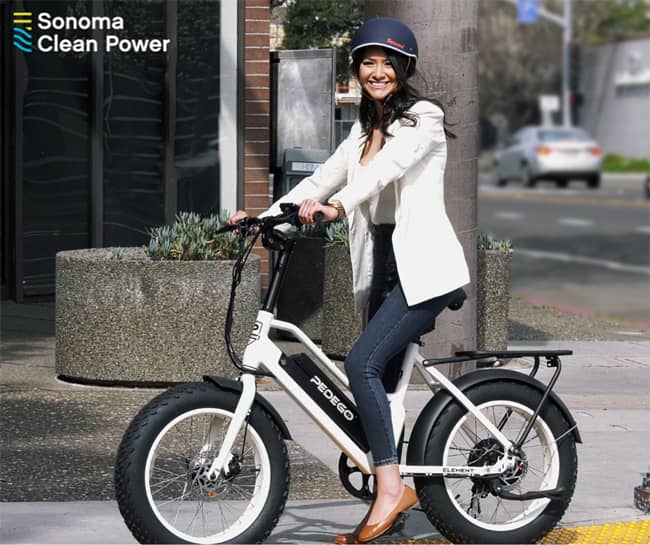
Sonoma Clean Power’s Pedego e-bike. [Photo courtesy of Sonoma Clean Power]
Thomas Edison and Henry Ford must be smiling today. They predicted more than 100 years ago, while gas cars were going strong, that the transportation of the future would be electric. Edison and Ford were combining their genius and working on electric cars as far back as 1903. In one of their experiments, they converted four of their gasoline-powered limousines to electric, using Edison’s nickel-iron batteries. They liked the quiet cleanliness of the electric engine over the explosive pops and bangs of the hard-to-crank gas engine. Ford’s wife, Clara, herself, drove a 1914 80-mile Detroit Electric. In 1914, even as his Model T, with its cheap gas and endless range, was madly popular, Ford announced via the New York Times that he and Edison had been “working for some years on an electric automobile which would be cheap and practicable… and we are satisfied now that the way is clear to success.” Edison, elsewhere for the same paper, confirmed his hopes and said, he believed that, “Ultimately the electric motor will be universally used for trucking in all large cities, and that the electric automobile will be the family carriage of the future.”
But the future was a long time coming. Between their brave statements and now, there was that pesky problem of the battery. How to make a battery light enough, that would run a car far enough? Whatever he and Edison could do, the range the car could go on a charge was just not good enough. So, eventually, Ford directed his resources behind his already wildly popular gas-powered, famous Model T, which he’d introduced in 1908 and which was already making him rich. They were cheap to make, affordable to buy and with gas at about 15 cents per gallon, they cost practically nothing to run. Everyone wanted one. The Model T buried the electric car.
Fast-forward to 2022 and Ryan Fogleman, the commercial sales manager for Hansel Ford Motors in Santa Rosa, is grinning ear to ear over Ford embracing electric vehicles as the future of transportation. “I just ordered the new, probably most sought-after electric vehicle in the market today,” he says. “The Ford F-150 Lightning!” Fogleman can’t wait. He’s counting down the days until June. According to him, and at least 200,000 others, it’s the coolest pickup truck since the now-classic F-series rolled out in 1948. “We can’t get them in fast enough,” he says.
An electric pickup…really? If you don’t pay much attention to the auto market, when you hear the word “electric,” you may only think of the high-end, elegant, futuristic and expensive Tesla. Surely, not a Ford and certainly not a pickup. But here it comes, and it’s electric, it’s beautiful and everybody wants one. Imagine that.
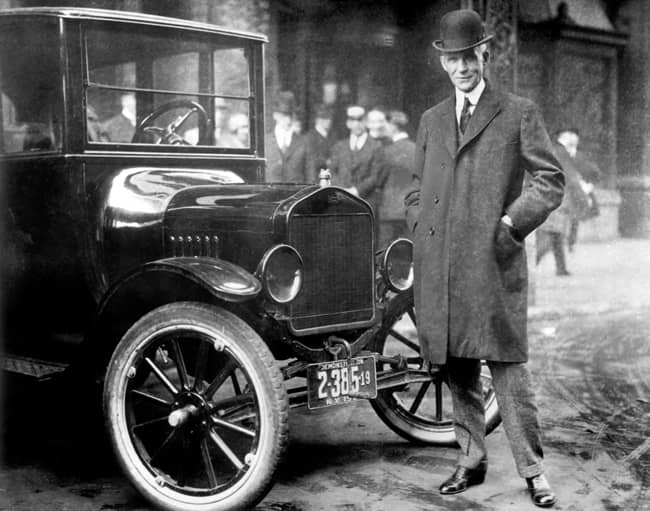
The Ford vision
When the environmental movement emerged in the 1960s, Ford Motor Company experimented with a small electric model that could travel 80 miles on a single charge. Ho-hum. After that, the company went silent on electric cars until the ’90s, when it produced the Ranger EV, a sleek pickup that also had an 80-mile range with 26-kilowatt-hour nickel-based battery packs. Better. But still that range problem. They made just 1,500 before recalling and then destroying them.
In subsequent years, Ford produced more electric cars and hybrids, but none of them blasted the market’s imagination until now, with the Lightning, the pick-up EV, which Ryan Fogleman awaits. “There were more than 200,000 orders placed in the first month,” he says. “They sold out probably the next two to three years of allocation with that truck. So now, it’s about the hardest thing on the planet to ever get your hands on.”
For those not already on Ford’s waiting list, almost all the other companies are showing an impressive range of new electric and hybrid models. Some more impressive, some more expensive, but all still ranging 200 to 400 miles per charge. The happy news for those committed to clean energy and environmental responsibility is that the market for clean energy automotive choices is wide open.
EV sales are doubling
In 2021, a year of continuing pandemic, with bottlenecks in the supply chain, EV sales in the U.S. doubled to a respectable half-million. Of these, Tesla sales still claimed more than half, but their share declined slightly as other companies brought out their competing models, such as the Lightning.
When it was first released, Fogleman was sure it would change the world. “It’s a cultural phenomenon and the beauty of the thing is that they just nailed it,” he says. “I think Ford based the electric truck on the guy that’s always had the truck, and they were used to their gas, and getting used to jumping in and doing whatever they wanted to do with it. Ford took that truck and made it better in every single way,” says Fogleman. And the battery is so great that you can even use it to power your house. “I’ve been in the car business for almost 31 years. My dad was in the industry for over 50 years. I’ve never been so excited about a vehicle in my life,” he says.
The benefits of electric transportation are practical, social and emotional. Based on a “total cost of ownership calculator,” which Ford developed, Fogleman expects he’ll lower the cost of ownership by about $18,000 over five years. “That’s super exciting in itself,” he says. “Then, of course, the social aspects of it are huge as well. My home has full, whole house solar; I’m completely off the grid. My PG&E bill’s like $30 a month, including the charging of my vehicles.” He is happy to say he can bypass gas stations. “I haven’t had to set foot in a gas station for almost five years,” he says. “And I can’t tell you how humbling that is.”
Range anxiety
While almost everyone understands the need for reducing auto emissions, not everyone can afford a brand new, top-of-the-line electric vehicle. For people like film producer Kenn Rabin, whose work keeps him conveniently located in his home office in San Anselmo, the decision to buy an EV feels good. But living with and depending on an EV requires planning, research, flexibility and patience. He is an expert in all that. This is his third EV.
“Our first electric car was a new 2009 Mitsubishi i-MIEV,” he says. “They were an incredible flop. The range might have been like 80 miles to a charge, brand new and the charge very quickly went down. I ran out of charge more than once in that car. Then we got a used 2013 Nissan Leaf, which we liked better, except again, for the range, which was not that much more than the Mitsubishi’s.”
For his third car, he researched the reviews and noted those points at which batteries underwent a leap in technology. He found that the range for the Nissan Leaf improved between 2016 and 2017. So, in 2020, he bought a 2017 Nissan Leaf, with a range of about 104 miles on a charge, even as a three-year-old car. The power of the battery has diminished somewhat over time. “Now, it has a range of about 92 miles on a full charge, which is kind of disappointing,” he says. “So, batteries do deteriorate quickly.”
As a renter, he hesitates to invest in the installation of a 220-home charging system, which is a cost if you don’t already have the line and have to pay an electrician. He uses the much-slower, standard 120 charger. “I plug it in about every third day or so overnight,” he says. “When the battery gets to be about 70% full, I’ll plug it in and bring it back to 100%.” This works most of the time, but he is always alert to the possibility of an emergency. “During the summer or during fire season,” he says, “I’ll try to plug it in every night, to be sure it’s always at 100%, in case we have to escape.” The 120 version is a slow charge, known as a “trickle charge,” which means you’re plugging into your regular 120 home outlet, and it may take about two days or more to fully charge, depending on the car. This can work, or not, depending on a person’s schedule and needs.
For people like Rabin, a car with this range is fine for local trips, errands and meetings in town. But for treks to the coast, he has to plan. “It’s fine for going to Point Reyes Station,” he says. “But if you want to go to Drakes Beach and back, you’re going to be right at the edge.” Contributing to his own “range anxiety” is that the mileage estimates on his dial—and maybe most dials—are just that: Estimates. Conditions (hills, weight in the car, age of the battery, etc.) will vary. “The thing can say you’ve got 40 miles left and then, 25 miles later, it’ll say you have five miles left,” he says. “That’s because maybe you’re running the radio or you’ve got your headlights on.” He says the driving range may go from 40 to 18 miles left in a matter of a mile or two. The technology on e-vehicles can be misleading, says Rabin.
Over the years as an EV driver, Rabin’s had a few uncomfortable experiences. “I had to limp it back along Shoreline Drive once by letting it recharge itself every time I went downhill. I barely got back home.” Lucky for travelers like him, the Visitor Station on Bear Mountain Road has three chargers, so one could hope that one of them would be available, and then you could sit there, meditating on serenity, while the car battery charges enough to get yourself home. Inconveniences aside, the bottom-line benefit is gas becomes irrelevant for EV owners. For that, if he wants to go on vacation or for a drive down to Monterey, he’ll have to strategize. He’s thought about hybrids, but is holding out hope that his next car will be all-electric––“without any range anxiety!”
Greenhouse gas emissions
Why is getting off gasoline so good? Sixty percent of greenhouse gas emissions in Sonoma County come from transportation, according to the Sonoma County Regional Climate Protection Authority. Reducing local emissions requires transitioning away from fossil fuels. Sonoma Clean Power (SCP) helps local residents, businesses and agencies make the transition by providing information, incentives and helpful programs such as their 2016 Drive EV program. “We ran that for three years between 2016 to 2018,” says Brant Arthur, programs manager in SCP. “We had over 1,200 people use that program to upgrade to clean vehicles.”
After promoting the EVs, SCP focused on EV chargers. “We’ve sent about 3,700 chargers to customers at this point,” says Arthur. “We’ve also enrolled a number of customers in a demand response program. So, if you’re charging in the middle of the day and there’s an opportunity to stop charging to prevent a blackout or something, you can do that.”
Charging your car can be complicated until you get used to it. Arthur explains that there are three types of chargers for electric vehicles, and there are variations within each one of these categories.
“Level one is, basically, 110 volts,” he says. “This is what you run your house on. You plug your EV battery into your household outlet, using the included charger, and it charges at a rate of about five miles of range per hour. Level two more than twice that speed,” he continues. “These will fully charge your car battery overnight, with 25-40 miles of range added per hour. Safety instructions advise that a certified electrician should set that up.” This could cost around $1,500 to install.
“Level three is much faster,” he says. “It’s also called DC fast charging. When you’re making a longer trip, you might want to stop at a station and charge quickly. The Level 3 can fully charge your car in 30 to 45 minutes.” Not all stations offer these and, with a price range from $15,000 to $50,000, they are not normally appropriate for the home.
Charging stations
On the road, EV drivers want to find the closest station available that has a Level 2, or possibly a Level 3 charging station. There are maps and apps, but all new EVs have GPS and with Google Maps, you can find nearby charging stations to make sure they have the kind of charger you need.
Out on the road, people complain that there are never enough chargers, and SCP is looking into it. “We’re also rolling out a partnership with the California Energy Commission and the Northern Sonoma County Air Pollution Control District,” says Arthur. “This is a $5.6 million collaboration to install public chargers. These will be fast chargers in public areas, near multi-family housing or shops.”
What about rebates?
The field of EV sales is a moving carousel of incentives and rebates and promotions and tax credits. Arthur advises looking out for a $7,500 federal tax credit, the $1,000 to $4,500 California clean vehicle rebate, or the $750 clean fuel rebate that the California Air Resources Board will deduct from the price of the car. Some may be current, some coming, or some may have expired, but it pays to search for them and possibly save up to $13,000. Pay attention to the eligibility limitations and qualifications around income, zip code and fluctuations in the duration of the incentives. Not all are offered all the time, or for everyone. In reading the ads, watch the dates for terms like, “up to…” and “for eligible…”
E-bikes
While 60% of the greenhouse gas emissions in Sonoma County come from transportation, one-third of all trips taken in Sonoma County are shorter than two miles, according to a Sonoma County Transportation Authority study. “That looked to us like a real opportunity,” says Arthur, and was the reason they launched “Bike Electric” in 2021.
Arthur says the goal was to help about 200 income-qualified customers to purchase electric bikes. They partnered with the Sonoma County Bicycle Coalition and 14 retailers, providing a $1,000 point of sale discount and give-away helmets. The program succeeded beyond expectations. “We ended up more than doubling that in sales,” he says. “We received a great response. People were really excited.”

Bruce Lund, of St. Helena, is a good example. Lund, a retired state parks engineer, has been a motorcycle rider since he was 13, a bicycle rider since he was 7, and now, over the age of 70, he still rides everything. Out of curiosity, he retrofitted one of his bicycles and now does errands about town on his e-bike. As an engineer, he likes to explain how things work.
“There are essentially two kinds of electric bicycles,” he says. “They’re both pedal assist. One of them is activated by a cadence sensor. It looks for the motion of the crank assembly under your feet. If there’s motion, it adds a motor. If there is no motion if you’re coasting, it does not add motor,” says Lund. “The other class is a torque sensor, and this one is entirely different. The cadence sensor doesn’t know how hard you’re pushing the pedal. It just knows the pedals are moving. But the toque sensor knows how hard your feet are pushing on the pedal and the harder you push on the pedal, the more it tries to assist,” he says. “It’s reading the torque on the crank from your feet and applying an algorithm to that to tell the motor to add power.”
His first ride, in Amsterdam back in 2005, was an eye-opener. “I rode it around the block a couple of times. And I went, oh, this is quite a range extender! It made the ride so much easier.” Because you can regulate how much energy you want to expend, using the bike is basic, transportation in cities and villages in Europe. “And part of what was driving the e-bike culture was being able to commute to work and not have to shower and change in and out of your cycling clothes,” he says.
Could e-bikes become a culture here? “I wish they were more widely used here as recreation and transportation,” says Colin Thomas, a Pedego dealer in Santa Rosa. But in the U.S., bicycle lanes, the way they are painted today, he says, do not allow bicyclists safety and peace of mind to compete with car drivers who are distracted most of the time. He suggests that with different infrastructure—wider roads with self-contained bike pathways like they have in Europe for example—bicycles could be used for transportation and commuting, as well as pleasure cruising. “That’s what I think people will want to be able to commute, he says. “Now I have maybe 18% of my customers who are physically commuting to work on their bikes. And I want more of it. As a community, we need to ensure funding for more trails for alternative methods of transportation.”
With an e-bike, riders can travel 25 miles without having to break a sweat. “You can get your heart rate up a little,” he says.
E-bikes are also age-free. In St. Helena, Jake Scheideman, now the former owner of St. Helena Cyclery—which is now Trek Bicycle—and his team are busy outfitting both young and old to cycle out into the hills and dales of scenic Napa Valley. With the electronic assist, they will find, whether fit or unfit, that coming home will be as easy as going out, and going up hills will be as easy as going down. The e-bike is an age-leveler.
“You know, a lot of people think I’m not old enough for an e-bike yet,” says Scheideman. “But my feelings are if you can afford an e-bike, get an e-bike. Because they’re fun!” They were not cheap. An entry bike runs somewhere around $1,500 to $2,000. “So that’s one of the big reasons why younger people don’t have them.” Also, these bikes can weigh between 30 to 70 lbs. The battery is the main cause of the weight, but at up to 60 miles per charge, which you recharge by plugging in at home, no one complains.
For Scheideman, the e-bike is an ideal ride for someone who is not so fit, maybe someone older and someone who wants to get out and enjoy feeling 16 again. “My target age is around 50,” he says. But any age can enjoy these things. “No one comes back from a test ride without a big, huge smile and a giggle.”
Do we really need an electric bicycle? E-bike rider Mike McKee, a man in his 70s, with a long career in Silicon Valley and a formative career in Vietnam, has an attitude toward both fun and challenge that’s more like that of a teenager.
“There comes a time in your life where exercise changes from being muscle building exercise to flexibility exercises. So, the point of my exercise routine is joint flexibility. I’m not trying to work hard at it.” He rides up hills he’d have found challenging when he was a kid, and now, thanks to the e-bike, he goes up to them like a breeze. “I’ve been over the Oakville grade, both directions. And if you’ve been over that grade in the car, it’s steep. I would never have been able to ride that road even in my youth.”
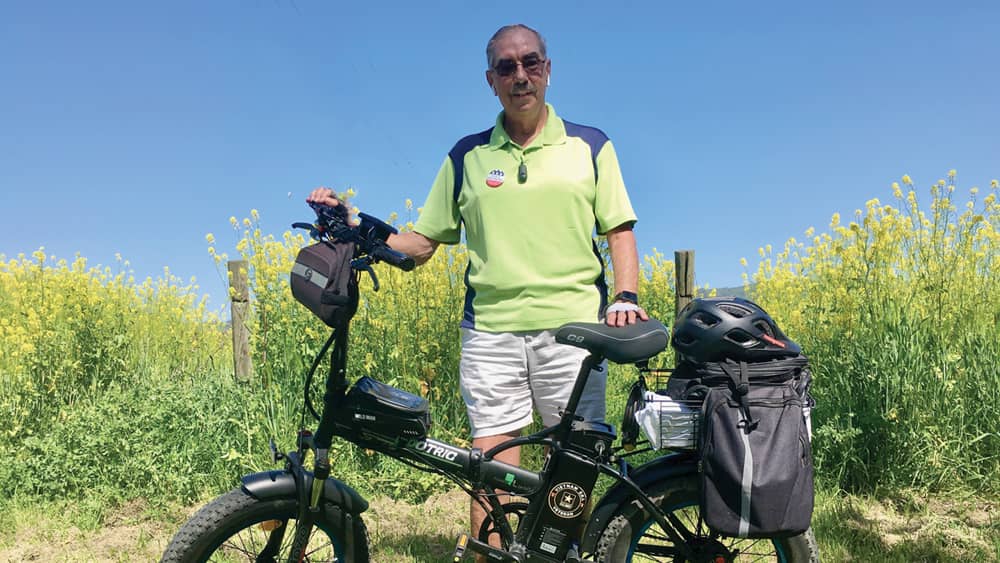
The future of e-transportation
With gas prices soaring at the present time, it’s hard not to wonder what took so long. But it takes a long time to get things right. This was something Henry Ford knew, in 1914, when just as his gas-guzzling Model T was becoming the car of the day, and his efforts to perfect an electric car, on which he’d placed real hopes, were failing. In an interview with Automobile Topics magazine, he said, “I believe that ultimately the electric motor will be universally used for trucking in all large cities and that the electric automobile will be the family carriage of the future.” Perhaps we’re approaching both Edison and Ford’s dream of a cleaner, brighter world.
Rebates and Deals
There are numerous rebates and deals available in the North Bay. Here are three websites to check out.
Drive Clean Marin
Incentives and rebates are available at marincommutes.org/drive-clean/.
California Clean Vehicle Rebate Project
To find rebates and deals on electric and plug-in hybrids, visit cleanvehiclerebate.org/en/eligible-vehicles.
PlugShare
PlugShare offers an app you subscribe to that shows you the chargers all over the country and helps you plan your trip. You have to sign in to get information. To learn more, visit plugshare.com.
Converting your Bike to Electric
Is it worth the time and money to convert your bike to electric? For retired state parks engineer and avid cycler Bruce Lund, it was. Out of curiosity, he retrofitted one of his bicycles and uses it to run errands around town. “If you have your own bicycle, you can convert it to an e-bike,” he says. “You can buy a conversion kit,” he says, adding that the cost right now is about $1,300 for the kit. “When I bought mine, it cost $699.”
Converting e-bikes is also environmentally sustainable. “Part of the whole sustainability issue is to make the most use of energy already invested in products in our hands,” says Lund. “The number one form of ‘recycling’ is to keep what you have operating longer, extracting more value from the capital and energy investment. This is a social engineering exercise,” he says. “High-tech training and good-paying local jobs. Keeping as much of the financing and cash flow as close to home as possible.”
If you have a bike you love and are mechanically minded, do your research, take the leap and purchase a conversion kit. (Check this site for pros and cons: ebikingtoday.com.)
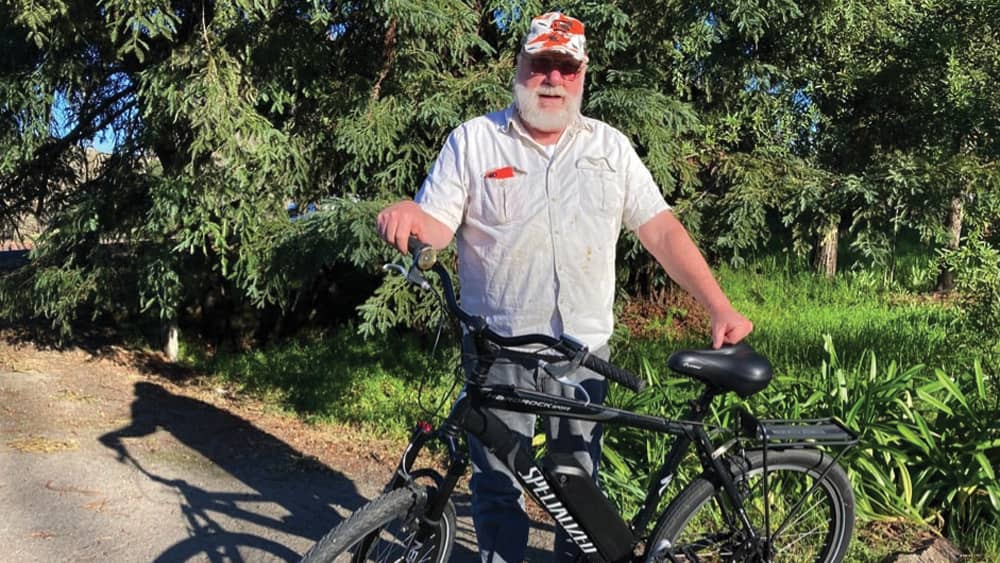
Did you know?
You can also convert a car to electric. In fact, it’s becoming a hot new trend, according to Ryan Fogleman, commercial sales manager at Hansel Ford in Santa Rosa. “Imagine my 1967 SS/RS Convertible with a Frame off TESLA conversion kit,” he says, dreaming of what could have been.
For the dreamers, check out Lunaz in England for their gorgeous classic car conversions at lunaz.design. For the adventurers, as your creative local mechanic where to begin.
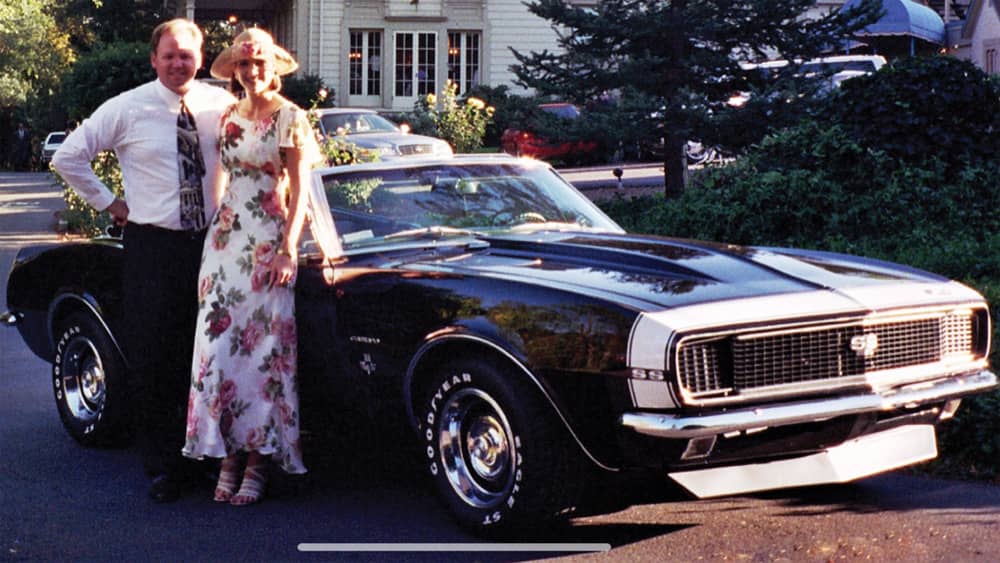
What About Hybrids?
Some people are not ready for the whole-life electric experience, with the plugging in and finding charging stations, not to mention the cost. They don’t mind using a little gas but do want to honor their personal commitment to clean transportation. Hybrids are great for them. They get amazing gas mileage with no chance of “range anxiety.” They can be a great transition into the all-electric world. Hybrid cars come in three basic types:
The Full Hybrid Electric Vehicle (FHEV), such as the Prius, runs on a combination of gas/electricity. Each can run independently of the other, and the battery charges while driving.
The mild-hybrid, usually just called hybrids, such as the Honda Insight, has an electric motor and gas engine and the two run together, with the battery charging while driving.
The Plug-In Hybrid, (PHEV), such as the Chrysler Pacifica, runs on gas/ electric and plugs in to recharge. It can also run just on the electricity.
With a wide range of price, make, style and performance, in the world of the hybrid, there really is something for everyone, and by using less gas, and getting great mileage, they help us to feel good about doing our part to reduce our overall load of greenhouse gas emissions.



